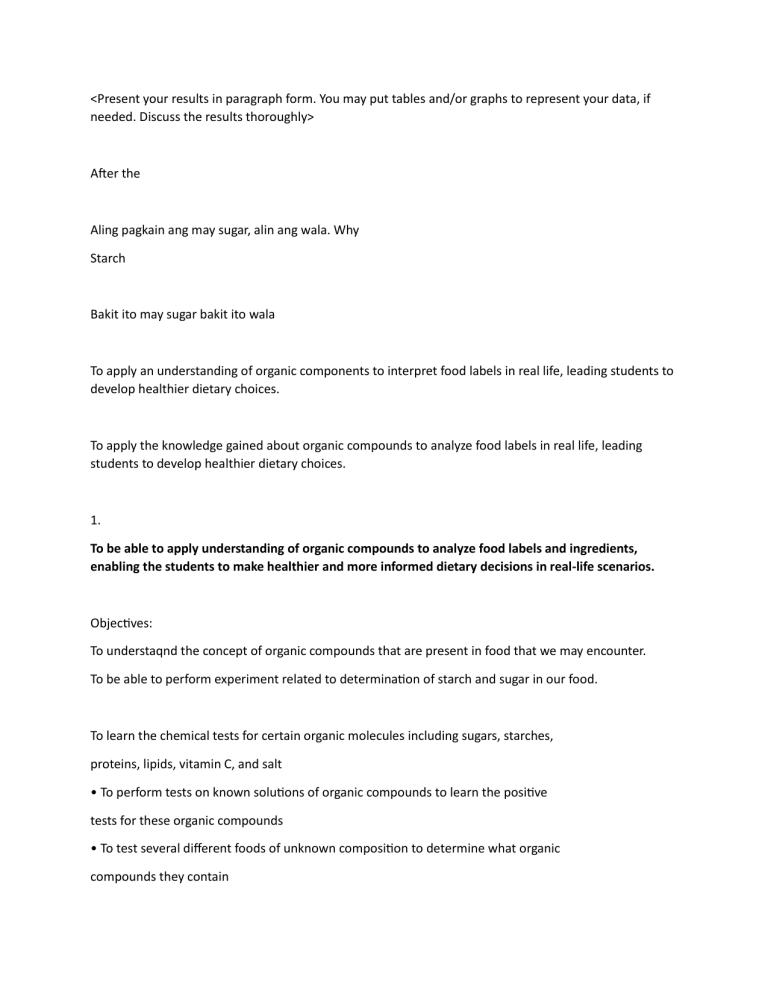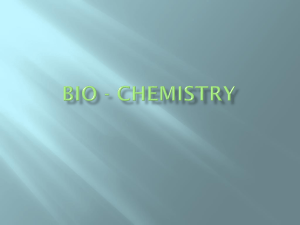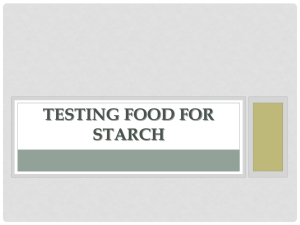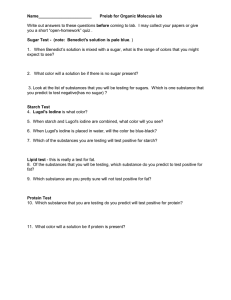
<Present your results in paragraph form. You may put tables and/or graphs to represent your data, if needed. Discuss the results thoroughly> After the Aling pagkain ang may sugar, alin ang wala. Why Starch Bakit ito may sugar bakit ito wala To apply an understanding of organic components to interpret food labels in real life, leading students to develop healthier dietary choices. To apply the knowledge gained about organic compounds to analyze food labels in real life, leading students to develop healthier dietary choices. 1. To be able to apply understanding of organic compounds to analyze food labels and ingredients, enabling the students to make healthier and more informed dietary decisions in real-life scenarios. Objectives: To understaqnd the concept of organic compounds that are present in food that we may encounter. To be able to perform experiment related to determination of starch and sugar in our food. To learn the chemical tests for certain organic molecules including sugars, starches, proteins, lipids, vitamin C, and salt • To perform tests on known solutions of organic compounds to learn the positive tests for these organic compounds • To test several different foods of unknown composition to determine what organic compounds they contain By employing these analytical techniques, we can accurately determine whether items contain starch or sugar, providing essential information for accurate ingredient labeling. Moreover, laboratory testing allows for precise measurement of the carbohydrate content in foods by accurately assessing starch and sugar levels, thus contributing to a better understanding of nutritional composition. To analyze experimental outcomes by observing color changes, indicating the presence or absence of starch and sugar in the tested samples. To examine the response of various food compounds with certain reagents when heated, in order to identify the presence of starch and sugar in the samples. 4 <Present your results in paragraph form. You may put tables and/or graphs to represent your data, if needed. Discuss the results thoroughly> don't have corn starch water coke apple egg honey have cornstarch mayo cornstarch orange much sugar honey apple blue no sugar corn starch distilled water yellow some sugar coke mayo violet trace of sugar egg white To assess the sugar content, we made use of a provided table with color indicators. We observed significant color changes after putting the test tubes in a hot water bath and carefully heating them for 1-2 minutes. The solution in the test tube with the blue tint, which represented distilled water and corn starch, stayed unchanged, showing the absence of sugar. In contrast, the solution became yellow in test tubes holding items such as Coke and mayonnaise, indicating the presence of sugar. Interestingly, a light violet tinge appeared in the test tube containing egg white, indicating the presence of just a small amount of sugar. These findings are fully consistent with the predicted responses of Benedict's solution to various sugar concentrations, providing significant insight into the composition of the tested compounds. This table displays the color changes observed in Benedict's solution when heated with different food items to detect sugar content. After conducting a series of tests, the obtained results and observed reactions are outlined below: A. Starch Content To check for the presence of starch, we added 5 drops of iodine to each 5 mL of the seven food samples. We discovered a 2:5 ratio between foods containing starch and those without. When exposed to iodine, mayonnaise and cornstarch became black, indicating the presence of starch. In contrast, the remaining five items—apple, honey, coke, pure water, and egg white—had a mild yellowish tint, indicating a limited reaction and the absence of starch. This noticeable contrast in reaction demonstrates that the examined food products had variable levels of starch in them, with some revealing a greater reaction to the iodine indicator than others. The table displays the presence or absence of starch in various tested food items. Each food item is listed alongside two columns indicating whether starch is present or absent. Food items with starch present are marked with "/ " in the respective column, while those without starch are denoted by an empty space. Presence of Starch in Tested Food Items Moving forward, this knowledge can empower individuals to develop a deeper understanding of the organic compounds present in their food. For a sugar test, set up a hot-water bath. Half fill the beaker with tap water. Heat the water to a gentle boil. CAUTION: Use extreme care when working with hot water. Do not let the water splash onto your hands. • While the water bath is heating, refill each cleaned test tube with 5 mL of the substance indicated on the labels. Add 10 drops of Benedict’s solution to each test tube. Gently swirl the test tube. CAUTION: Use extreme caution when using Benedict’s solution to avoid staining hands or clothing. • Place the test tubes in the hot-water bath. Heat the test tubes for 1-2 minutes until a color change occurs. With the test tube holder, remove the test tubes from the hotwater bath and place them back in the test tube rack. CAUTION: Never touch hot test tubes with your bare hands. Always use a test tube holder to handle hot test tubes. • In the Data Table, record any color changes. When heated, Benedict’s solution will change color. From blue to green, yellow, orange, or red in the presence of a single sugar, or monosaccharide. See Table 1 below 1. Discuss the results of the experiment. Discuss each group of organic molecules separately. 2. Were your predictions supported by the data? Explain. 3. Does distilled water contain any of the organic compounds you tested? What is the purpose of using distilled water as one of your test substances? 4. What analysis could you make if a positive test for any of the organic compounds occurred in the test tube containing only distilled water? 5. Were there any sources of error? Discuss any errors that may have affected the results of the experiment Distilled Water Examination and its Purpose as one of our Test Substances No, distilled water does not contain any of the organic compounds tested, such as starch or sugar. Distilled water is produced through the process of boiling water and collecting the resulting steam, which removes impurities including organic compounds. Its significance in our experiments lies in its purity. In experiments like we conducted, controlling variables is essential for obtaining reliable results. While other substances may contain impurities, distilled water is free from such contaminants, providing clarity in observing reactions when mixing samples. Using distilled water helps us accurately determine the presence or absence of specific chemicals in our experiments. If a positive test for any of the organic compounds took place in a test tube containing distilled water, the test would most likely be flawed. This is because; distilled water has no impurities and has no chance for it to be a positive test in this experiment. This might be a fault caused by recycling a test tube from earlier studies that has not been properly cleaned, or by contamination. Certain chemicals or impurities in the distilled water may also react with the test reagents, leading to a positive result even when organic compounds are not present.




